April 26
I continue to work on the formal container list, but am barely a fourth of the way done. I can't help but believe that at some point community members began turning over their family papers and private collections to Mrs. Calloway. They must have trusted that Calloway would preserve their family legacies through the efforts of the museum. The collection is too large and too varied to have been the results of rescue efforts-- from abandoned buildings (although it is documented that Mrs. Calloway did engage in searches of abandoned premises before they could be demolished by the city). I continue to find treasures. Here is one of Phil Donahue being honored at Boys Town. . . Who would have guessed that the museum had co-sponsored a Nebraska branch of the Association for the Study of African American History and Life. There is a copy of a print by James Van Der Zee (Harlem artist), as well as information on Pullman Porters (the Protective Order of Dining Car Waiters-Local no. 465) in Omaha. Apparently A. Philip Randolph personally organized an Omaha Division of Sleeping Car Porters in Nebraska in 1925.
April 22
Today a graduate student named Amy Forss came to conduct research in the collection. Ms. Forss obtained special permission from Mr. Calloway to do so. Ms. Forss' dissertation is on the indomitable Ms. Mildred Brown, founder and manager of the Omaha Star Newspaper, and naturally, the Great Plains Black History Museum and the Nebraska State Historical Society, did all that they could to accommodate the scholar.
I have finished perusing and sorting the collection into major sections. However, I continue to be distracted by the wealth of the holdings. Some examples of the breadth and depth of the manuscript holdings are: clippings of articles on the Black Panther Party trials in California and in Omaha; lighting directions for a series of minstrel and vaudeville type shows which opened in the city; information on dining car waiters in Omaha; original essays by Father John P. Markoe on discrimination as a sin against humanity [c. 1951]; and an Omaha High School Register from 1914. There is also evidence of African American participation at the Trans Mississippi Expo of 1898 at Kounze Park (aka Malcolm X Park).
April 19
Mr. Jim Calloway surprised me today by bringing Mrs. Calloway to see the collection. I had met Mrs. Calloway on a number of occasions, but many years had passed. She arrived in a wheelchair, and with a nurse. I was actually in awe of the great lady. Mrs. Calloway showed great interest in the photographs and asked to be reminded of several of the women photographed early in 20th century Omaha. Although many years have gone by since Mrs. Calloway has worked with the papers, her passion for African American history was clear.
April 12
Have found a brief biography on curator Bertha Calloway. She was born in Denver, Colorado and became head of the Great Plains Black Museum in 1979. The museum opened, however, in 1976, but operated, it seems, with considerable collaboration by members of the board. In fact, Mrs. Calloway had established an early form of the museum in the late 1960s. The prototype was called the Negro Historical Society of Nebraska, and was patterned, in large fashion, after the State Historical Society of Nebraska. Mrs. Calloway envisioned the Great Plains Black Museum as a regional repository of African American manuscripts and memorabilia, and wanted it to serve the several states which make up the Great Plains. . . I am increasingly intrigued with Mrs. Calloway as a curator. As far as I know, the general public did not have access to the enormous archive that Mrs. Calloway amassed, and yet, the running of the museum must have occupied only a portion of the director's time. She was indeed acquisitions manager, curator, conservation specialist, as well as hostess and director of the museum.
The collection revealed a number of interesting items today. In a box of Rare Books, is a 1969 issue of Ebony Magazine featuring the late Betty Shabazz reflecting on her life with Malcolm X. Forrest M. Stith's book, Sunrises and Sunsets, on the transition of an African American from slavery to freedom is in good form. There is a box on art, which includes some artistic designs by my friend the artist Neville Murray, and more materials on Professional African American men in Omaha. Inside of the latter is a handy list of the African American owned and operated business along North 24th Street, back in the community's hey day--before desegregation.
There are Boxes on Sports, and one on Prospect Hill Cemetery (where African American graves are indicated by the word "colored" until 1887, and afterwards are not marked as such, but have the names Myers or Thomas (Black owned funeral homes) associated with the cemetery plots--so that African Americans interned here are identifiable. I continue to enjoy my work and am looking forward to the day that this collection can be made available to the public.
Wednesday, April 28, 2010
Monday, April 5, 2010
April 5, 2010 Update
I have spent the past two and 1/2 weeks finalizing my sorting of the GPBHM Collection into large sub-categories. All of the boxed archival material is now in one of nine sub-groups. The sub-groups are:
1. Black Institutions --institutions which define themselves as black in orientation, and which are organized and run by African Americans, or integrated institutions whose mission includes desegregation and civil rights for African Americans. This subgroup includes administrative materials for the GPBHM itself (and its programs), the NAACP, the Northside Y.W.C.A, Urban Action Association, the Urban League, the National Federation of Colored Women Clubs, etc.
2. Local Histories---Any Series with documents pertaining to African Americans in Omaha or Lincoln specifically, and to African Americans in Nebraska in General. Local histories include: Arts, Church, Civil Rights, Cowboys, Clubs (and Social life), Fraternities, Homesteaders, Masons, Military, Music, Schools, etc.
3. Family Papers--There are at present roughly twelve family collections. The surnames of families include, Dixon, Thomas, Chambers, and more.
4. Newspapers--African American Newspapers--includes rare, alternative presses with limited runs. Contains issues of The Voice, Everybody Magazine, and Black Realities.
5. Rare Books--contains African American history books, and Black cookbooks, among other items.
6. Musical Scores--Church and Secular music in the African American tradition.
7. B. Calloway's Research Collection Africana--contains African American Historical Data and Materials compiled by the original curator of the collection.
8. Photograph Collection: A large collection (aprox. 4 cu. feet), of photographs of African Americans in the Midwest. Most of the photos document the history of African Americans in Nebraska, and especially in Omaha.
9. Artifacts--period dresses, records, and more.
I started typing the formal container list today April 5. I had an idea about how to proceed and checked with Tom Mooney, who said it would work out fine, for now. The collection will be described one Sub-Group at a time. Boxes within each sub-group will be identified by title (ex. Masons). For Boxes bearing the same title, successive boxes will be numbered (Masons, Masons 2, Masons 3, etc). When the files in the boxes approximate the actual contents, the file name will be listed. Otherwise, a name will be adopted which describes the majority of the contents of a file.
I hope to post the container lists for the collection (or at least a few of the subgroups in a couple of weeks). In the meanwhile, here are some highlights from the weeks of March 22, and March 29. (Note that Jim Calloway came down on March 29th and today on April 5. His visits are instructive, but the trade off is that I am not as able to focus for as many hours on the task at hand).
Highlights include:
a brief biography of Flora Pinkston; photos linking Lincoln's Col. Paul and Alda Adams with Mildred Brown founder of the Omaha Star. Other items of importance are: A history of the life of Father John Markoe, Photos of St. Benedict School Children, and a Box on Black Nebraska Women including information on Anna Burckhardt, T.O. Muhammit and others. African American Artists in Omaha, A list of African American businesses in Omaha [c. 1950s?], and a club directory from 1970 were fascinating in their contents. Charlie Washington's funeral program, and other funeral programs of Northside personalities were instructive. There is a box on the Trans Mississippi Expo. of 1898 and African American participation. A Series on Pullman Porters in Nebraska, and the history of the Omaha Division, will garner the attention of scholars. The wealth of the holdings are clear to me. I wonder whether the Schomburg Center For Research in Black Culture, or the Emory University Collection entitled MARBLE would consider providing an endowment for this collection as it is one of the largest and most in- depth collections documenting African American life that I have ever seen, and is truly one-of-a kind in its documentation of African American life on the Great Plains.
1. Black Institutions --institutions which define themselves as black in orientation, and which are organized and run by African Americans, or integrated institutions whose mission includes desegregation and civil rights for African Americans. This subgroup includes administrative materials for the GPBHM itself (and its programs), the NAACP, the Northside Y.W.C.A, Urban Action Association, the Urban League, the National Federation of Colored Women Clubs, etc.
2. Local Histories---Any Series with documents pertaining to African Americans in Omaha or Lincoln specifically, and to African Americans in Nebraska in General. Local histories include: Arts, Church, Civil Rights, Cowboys, Clubs (and Social life), Fraternities, Homesteaders, Masons, Military, Music, Schools, etc.
3. Family Papers--There are at present roughly twelve family collections. The surnames of families include, Dixon, Thomas, Chambers, and more.
4. Newspapers--African American Newspapers--includes rare, alternative presses with limited runs. Contains issues of The Voice, Everybody Magazine, and Black Realities.
5. Rare Books--contains African American history books, and Black cookbooks, among other items.
6. Musical Scores--Church and Secular music in the African American tradition.
7. B. Calloway's Research Collection Africana--contains African American Historical Data and Materials compiled by the original curator of the collection.
8. Photograph Collection: A large collection (aprox. 4 cu. feet), of photographs of African Americans in the Midwest. Most of the photos document the history of African Americans in Nebraska, and especially in Omaha.
9. Artifacts--period dresses, records, and more.
I started typing the formal container list today April 5. I had an idea about how to proceed and checked with Tom Mooney, who said it would work out fine, for now. The collection will be described one Sub-Group at a time. Boxes within each sub-group will be identified by title (ex. Masons). For Boxes bearing the same title, successive boxes will be numbered (Masons, Masons 2, Masons 3, etc). When the files in the boxes approximate the actual contents, the file name will be listed. Otherwise, a name will be adopted which describes the majority of the contents of a file.
I hope to post the container lists for the collection (or at least a few of the subgroups in a couple of weeks). In the meanwhile, here are some highlights from the weeks of March 22, and March 29. (Note that Jim Calloway came down on March 29th and today on April 5. His visits are instructive, but the trade off is that I am not as able to focus for as many hours on the task at hand).
Highlights include:
a brief biography of Flora Pinkston; photos linking Lincoln's Col. Paul and Alda Adams with Mildred Brown founder of the Omaha Star. Other items of importance are: A history of the life of Father John Markoe, Photos of St. Benedict School Children, and a Box on Black Nebraska Women including information on Anna Burckhardt, T.O. Muhammit and others. African American Artists in Omaha, A list of African American businesses in Omaha [c. 1950s?], and a club directory from 1970 were fascinating in their contents. Charlie Washington's funeral program, and other funeral programs of Northside personalities were instructive. There is a box on the Trans Mississippi Expo. of 1898 and African American participation. A Series on Pullman Porters in Nebraska, and the history of the Omaha Division, will garner the attention of scholars. The wealth of the holdings are clear to me. I wonder whether the Schomburg Center For Research in Black Culture, or the Emory University Collection entitled MARBLE would consider providing an endowment for this collection as it is one of the largest and most in- depth collections documenting African American life that I have ever seen, and is truly one-of-a kind in its documentation of African American life on the Great Plains.
Subscribe to:
Posts (Atom)

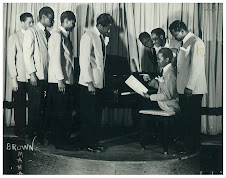
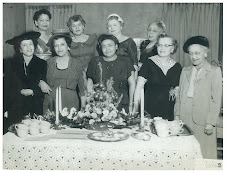
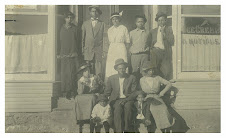
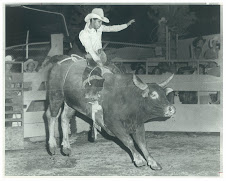


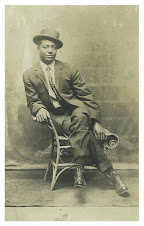
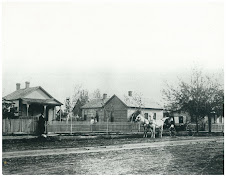.jpg)

